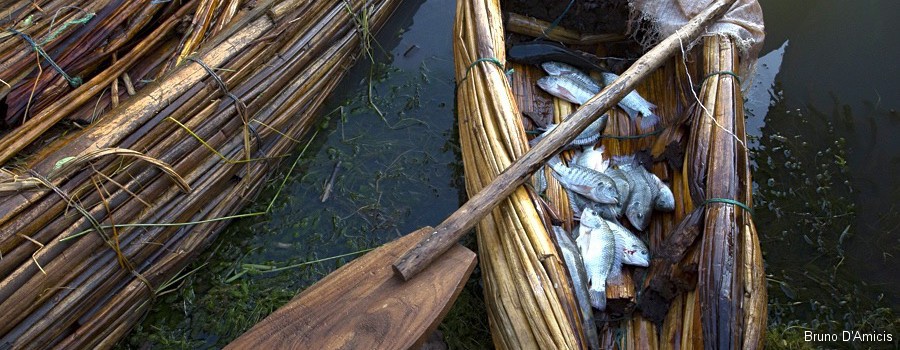
The rhythm of life on the lake
Traditional fishing with papyrus boats
Early in the morning when dawn is breaking, hundreds of local traditional papyrus fisherboats gently glide into the waters of Lake Tana. It is a way of life that has remained unchanged since the 9th century BC. The traditional fishing boats, known locally as a “tankwa”, are canoe-shaped rafts made by binding together papyrus reeds, which grow along the lake’s shoreline. It only takes a skilled boat-builder a few hours to construct, a tradition passed down from generation to generation. But the boats can only be used for a month or two before getting waterlogged, as they are not waterproof. Each day the fisherman pulls his boat out of the water and leans it against a tree to dry, as his father and his grandfather have done before him.
Fishermen traditionally use a spear or net to catch the fish. Yet since the introduction of motorised fishing equipment and modern technology in the 1980s, fishing has become a commercial activity on the lake. Papyrus does not grow around the lake as much as it did in the past, as the shores are converted to farmland or developed areas. The traditional methods and fish stocks are becoming more and more threatened. Demand for fish was historically low in Ethiopia, as Ethiopians are traditionally meat eaters and fish was regarded as a food for religious fasting periods. However tastes are changing and demand is currently rising.
Communities living on the shores of Lake Tana rely on fishing not only to supplement their daily diet, but also as a source of income. Fish species that are caught include the African Catfish, Tilapia and Barbus. Lake Tana is well known for its unique concentration of native fish species due to its isolation from other lakes and rivers. Approximately 70% of the 67 different fish species are endemic, and the lake is home to the only remaining intact flock of Barbus fish in the world.
